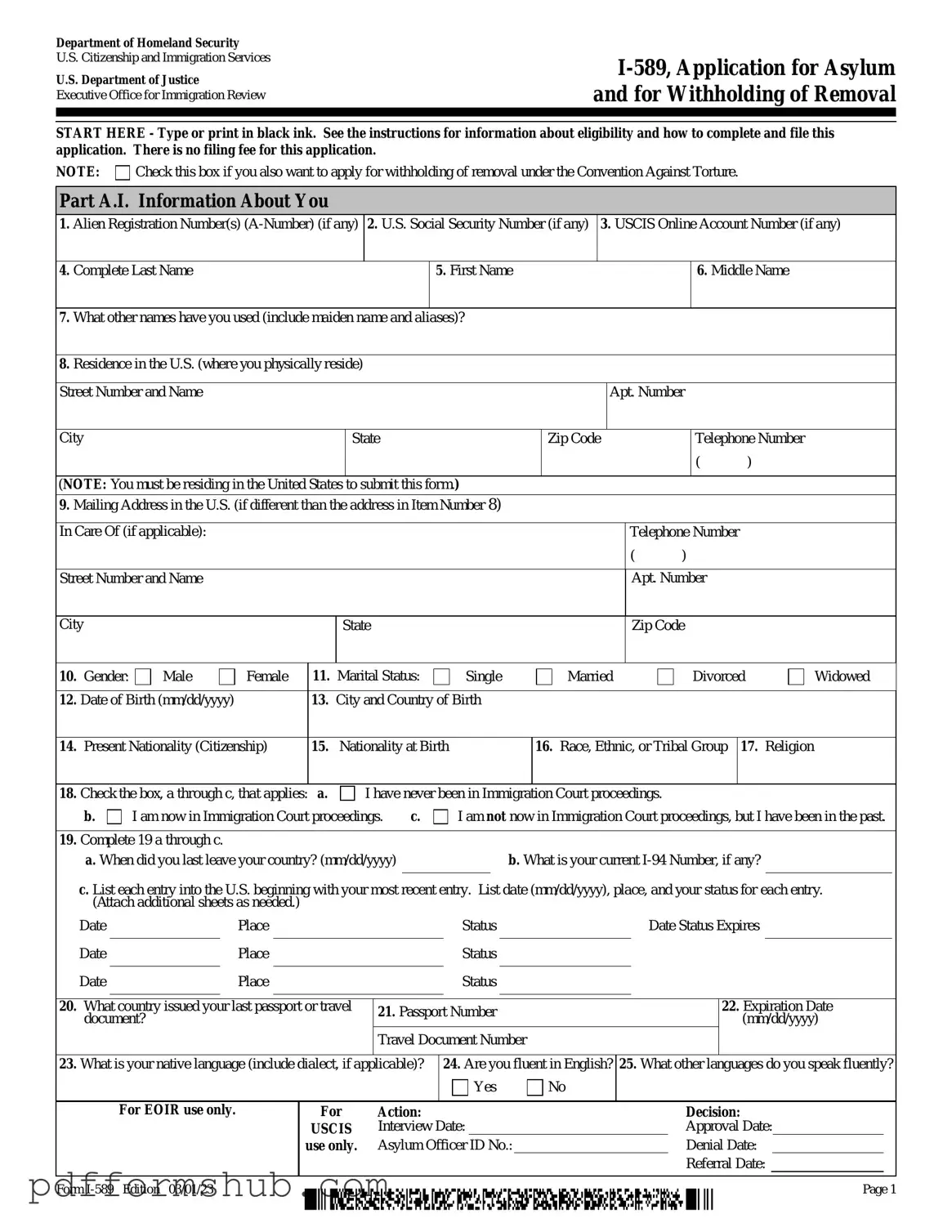Fill in Your USCIS I-589 Form
The USCIS I-589 form is a crucial document for individuals seeking asylum in the United States. It allows applicants to present their case for protection from persecution in their home country. If you are considering applying for asylum, it's important to understand the details of this form and how to fill it out accurately.
Start your journey towards safety today by filling out the I-589 form. Click the button below to get started!
Customize Form
